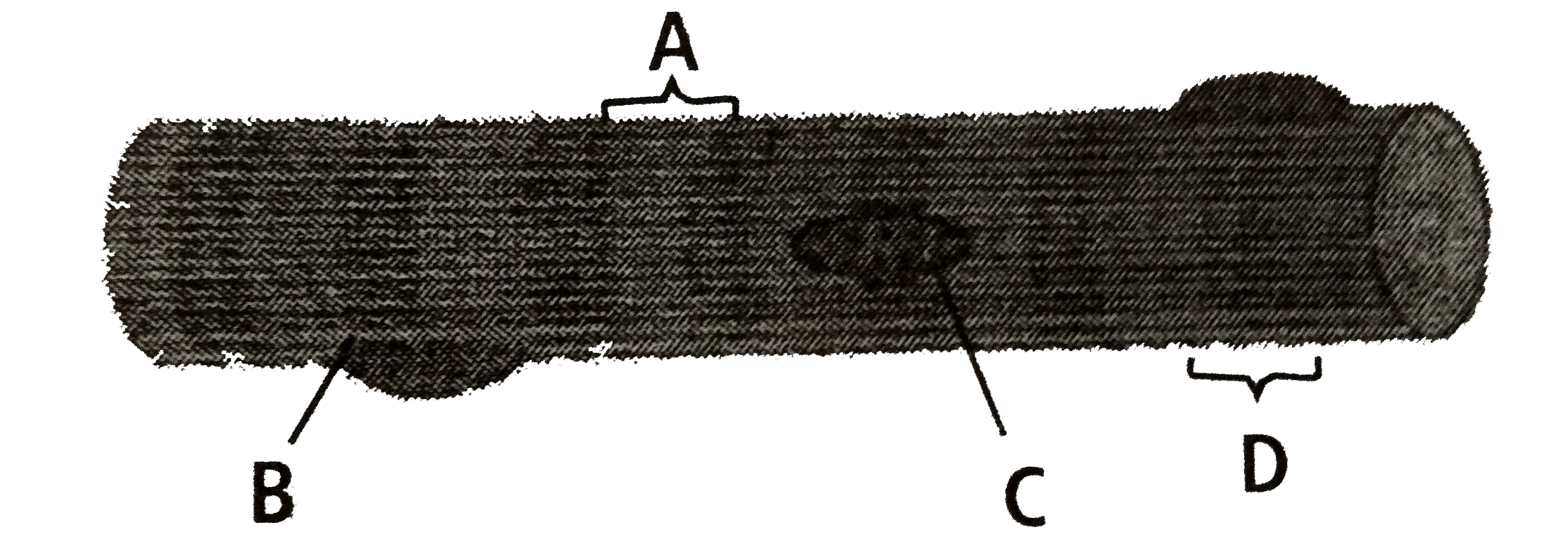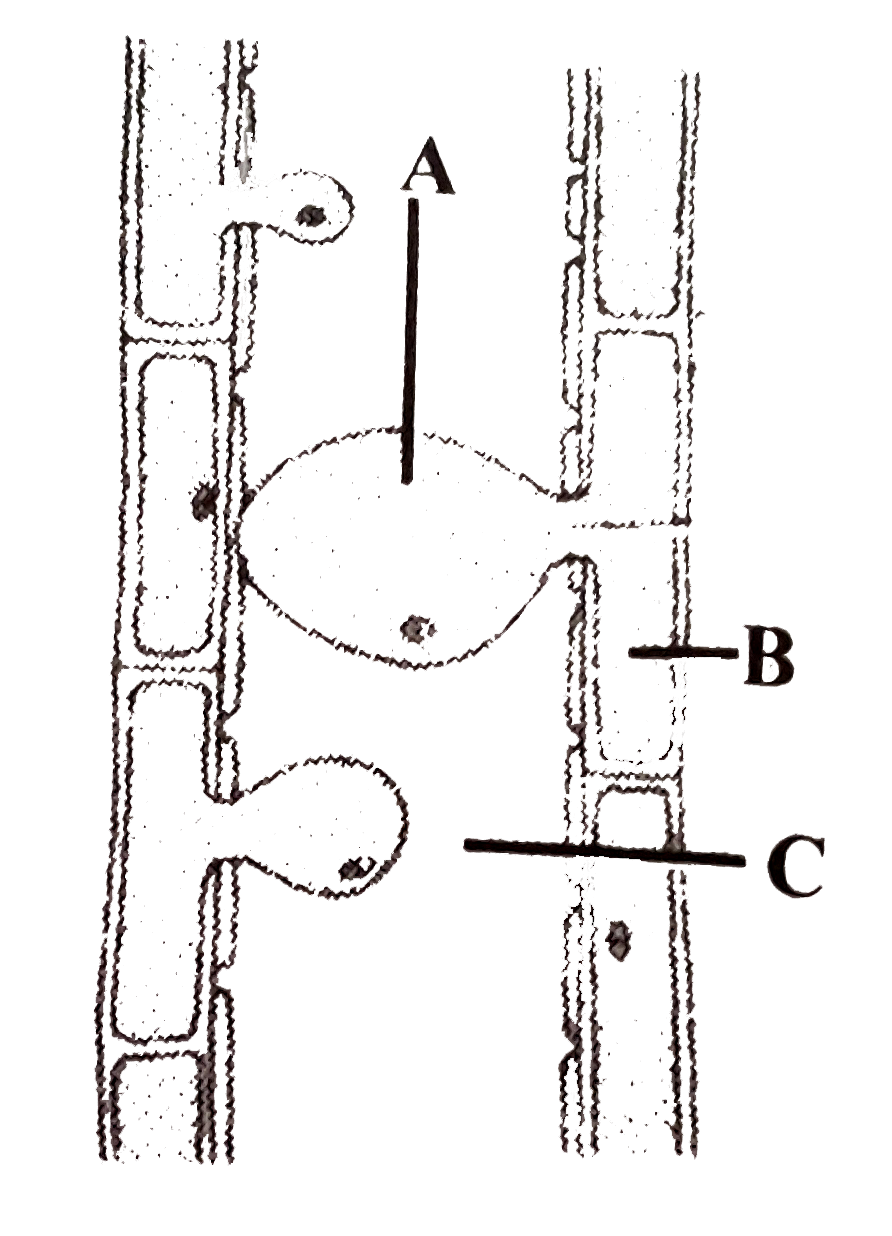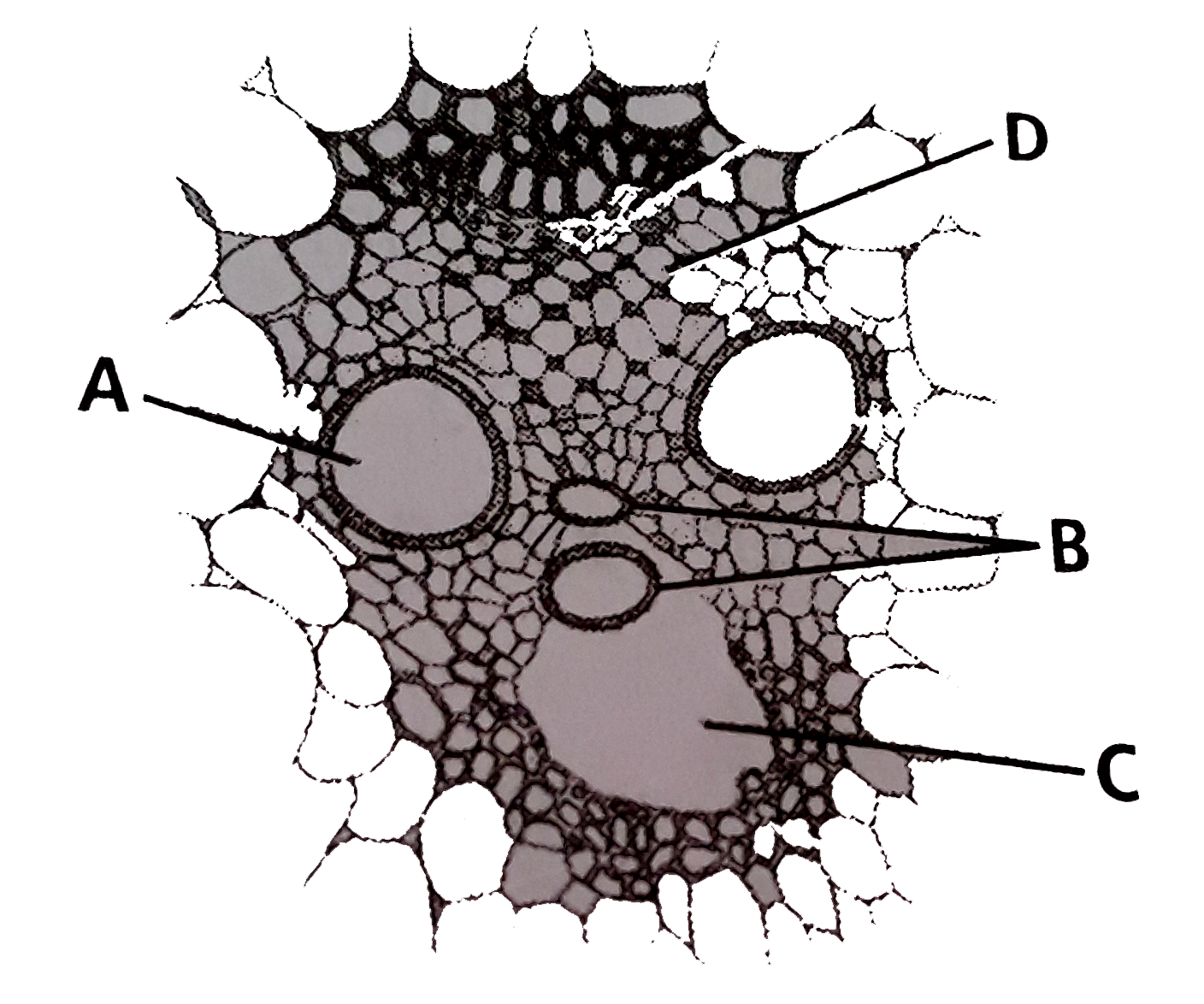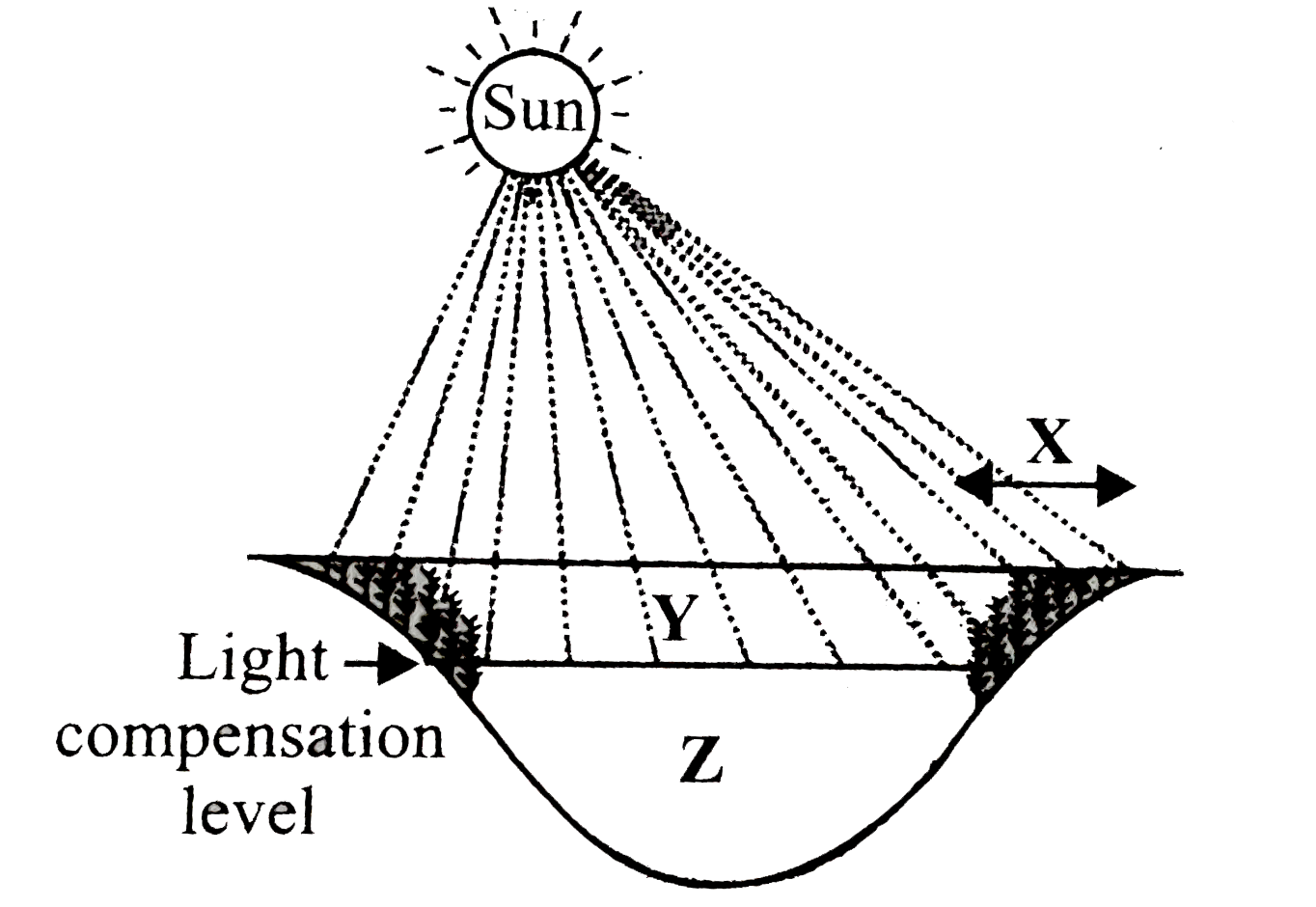The given figure represents vexillary aestivation. Select the suitable labels for P,Q and R

A
(P)(Q)(R)StandardWingAla
B
(P)(Q)(R)StandardkeelWing
C
(P)(Q)(R)WingkeelCarina
D
(P)(Q)(R)StandardAlaCarina
Video Solution
Text Solution
The correct Answer is:D
In verxillary/descending imbricate aestivation, the posterior petal (standard) overlaps the two lateral petals (wings or alae) and the latter overlap the two anterior petals (keel or carina). It is also called papilionaceous corcolla and is found in members of Family papilionanceae.
|
Topper's Solved these Questions
- MORPHOLOGY OF FLOWERING PLANTSBook:NCERT FINGERTPS ENGLISHChapter:MORPHOLOGY OF FLOWERING PLANTSExercise:Morphology Of Flowering Plants
Explore 135 Videos
- MINERAL NUTRITIONBook:NCERT FINGERTPS ENGLISHChapter:MINERAL NUTRITIONExercise:Mineral Nutrition
Explore 130 Videos
- NEURAL CONTROL AND COORDINATIONBook:NCERT FINGERTPS ENGLISHChapter:NEURAL CONTROL AND COORDINATIONExercise:All Questions
Explore 144 Videos
Similar Questions
Knowledge Check
Given figure represents C4 pathway. Select the suitable options for A,B and C.
 AABCDecarboxylationReductionRegenerationBABCFixationTransaminationRegenerationCABCCarboxylationDecarboxylationReductionDABCFixationDecarboxylationRegeneration
AABCDecarboxylationReductionRegenerationBABCFixationTransaminationRegenerationCABCCarboxylationDecarboxylationReductionDABCFixationDecarboxylationRegenerationThe given pie diagram represents different components of the soil. Identify P,Q and R and select the correct option
 APQRWaterBiotaMineral saltsBPQRMineral saltsBiotaWaterCPQRMineral saltsWaterBiotaDPQRBiotaWaterMineral water
APQRWaterBiotaMineral saltsBPQRMineral saltsBiotaWaterCPQRMineral saltsWaterBiotaDPQRBiotaWaterMineral waterThe given figure represents the histology of of a striated muscle. Identify the parts labelled as A, B, C and D, and select the correct option.
 A(A)(B)(C)(D)(Sarcoplasm)(Sarcolemma)(Dark band)(Light band)B(A)(B)(C)(D)(Dark band)(Myofibril)(Nucleus)(Light band)C(A)(B)(C)(D)(Light band)(Myofibril)(Nucleus)(Dark band)D(A)(B)(C)(D)(Nucleus)(Dark band)(Light band)(Myofibril)
A(A)(B)(C)(D)(Sarcoplasm)(Sarcolemma)(Dark band)(Light band)B(A)(B)(C)(D)(Dark band)(Myofibril)(Nucleus)(Light band)C(A)(B)(C)(D)(Light band)(Myofibril)(Nucleus)(Dark band)D(A)(B)(C)(D)(Nucleus)(Dark band)(Light band)(Myofibril)

Refer to the given figure and select the correct option representing the osmolarity at P,Q,R and S.
View Solution
Identify the given figure and select the correct labels for A,B and C
View Solution
Refer to the given figure which represents a section of vascular bundles as seen in T.S. of a monocot stem and select the option that correctly labels A, B, C and D
View SolutionGiven figure represents the different zones of a lake or a pond.

Identify the labelled parts X,Y and Z and select the correct statement.
View SolutionIdentify the given figure and select the correct option for the parts labelled as A, B and C

View Solution

